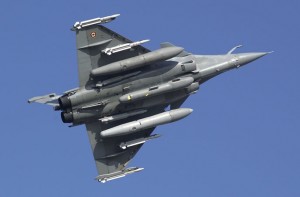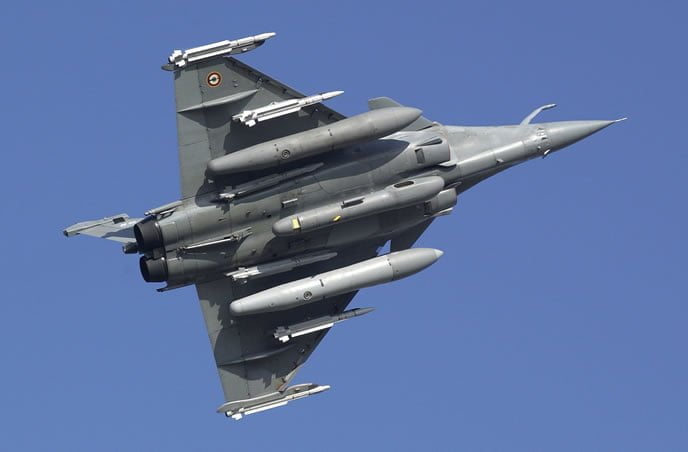10/11/2011 During the French operations in Afghanistan, the reconnaissance pods on the Rafael provided to be a key asset. The tactical aircraft provided dynamic targeting data and were able to work with the sea-bases to work an intervention and strike picture to guide the entire French air operation. This was the first time these new assets were used off of the Raphael.
During a recent visit to Paris, Second Line of Defense sat down with Vice Admiral (Retired) Richard Wilmot-Roussel, now the naval advisor to the head of Dassault Aviation. The Vice Admiral has had a wide-ranging naval career, including being the first Commander of the French Aircraft carrier, the Charles De Gaulle.
SLD: How were the new recce pods used in the Libyan operations?
Wilmot-Roussel: The first reason was that the capabilities were necessary to deal with the problem of collateral damage. The recce pods were important to deal with this challenge. The planes were able to transmit their images to the aircraft carrier and within a very short period of time you had dynamic information available about what was going on in a fluid ground situation.
For example, before striking or firing target in a town, they were looking at what was surrounding the target. And when they saw that a school was nearby, they monitored the situation carefully, before striking the target, which was close to the school. That’s something incredible.
In Afghanistan it is not like that, as the terrain is much more open. So this system was crucial for the close proximity areas and for targeting in these areas.

SLD: The collatoral damage issue in dynamic targeting is a key issue and was underscored as well in our conversation with the French Air Operations chief, General Desclaux. So what other advantages did the pods provide?
Wilmot-Roussel: The pods could provide information to shape a common operating picture. The people who were working in intelligence could really take all the information coming from all the sensors to establish the real tactical situation in a fluid environment. And that information flowed easily into shaping the targeting approach, and we used for the first time a variant of the AASM. The first type of AASM uses GPS and we have used that in Afghanistan. Here we used for the first time a second variant which additionally uses laser guidance. And that has less than one meter accuracy.
And the accuracy of the information generated by the pods allowed us to deal with the transition of Gadaffi’s forces to using the same equipment as the rebels. Without these pods, it would have been difficult to deal with the blending of forces, and the need to distinguish the real targets of the operation.
SLD: This highlights the importance of getting information to the right decision maker, in this case clearly the pilots?
Wilmot-Roussel: It does highlight the importance of the man in the loop. In this case, it was the man in the loop on the field in who can really manage the situation. The man in the cockpit is empowered by the kind of capability which the recce pad represents.


